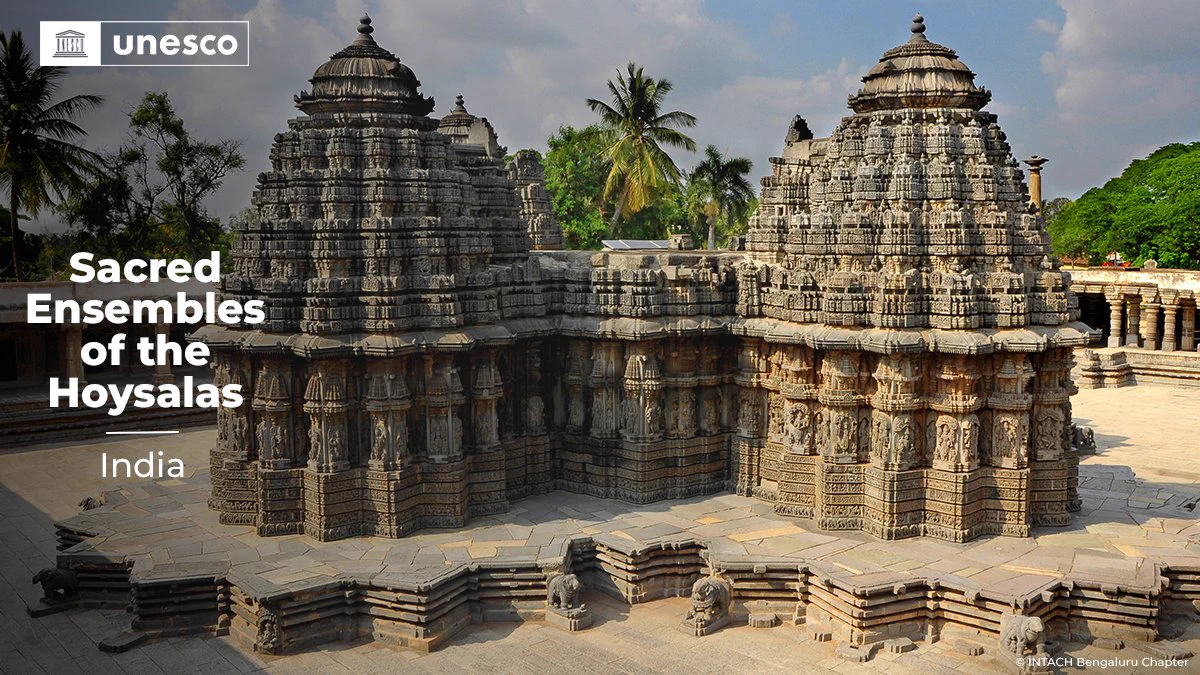“If ever, poetry was carved in stone. It is in these monuments of India.” – Permanent Representative of India to UNESCO, Vishal V Sharma on the Sacred Ensembles of the Hoysalas
The Sacred Ensembles of the Hoysalas, which includes the three temples in Karnataka, has been included in the UNESCO World Heritage list. The announcement was made on September 18 by the agency in Riyadh, Saudi Arabia, where the 45th session of the World Heritage Committee is being held till September 25.
The inclusion of Sacred Ensembles of the Hoysalas takes India’s UNESCO World Heritage Sites count to 42. Earlier on Sunday, September 17, the abode of Rabindranath Tagore, Santiniketan was also included as a world heritage site.
https://x.com/narendramodi/status/1703790330099740685?s=20
Following the announcement, Prime Minister Modi took to his social media to share his delight. “The timeless beauty and intricate details of the Hoysala temples are a testament to India’s rich cultural heritage and the exceptional craftsmanship of our ancestors,” he said.
The Hoysalas temples are 12th century architectural wonders, from the Hoysala period and located at Belur, Halebidu and Somanathapura in Karnataka.
The three temples include the Chennakeshava temple, the main temple at Belur (Hassan district), located at the centre of the traditional settlement which is surrounded by the remnants of a mud fort and a moat; the Hoysaleswara Temple on the banks of Dwarasamudra tank in Halebidu (Hassan district); and the Keshava Temple at the centre of Somanathapura village (Mysore district).
At the Chennakeshava temple, there is a continuity of worship, rituals and festivities since its inception in 1117 CE. Chennakeshava in kannada langauage means ‘good or benevolent Krishna’. These monuments are extraordinary expressions of spiritual purpose and vehicles of spiritual practice and attainment, set in the Western Ghats., informed Permanent Representative of India to UNESCO, Vishal V Sharma.
The stone carvings depict stories of ancient scriptures of India. The temples Channakeshava, Hoyasaleshwara and Keshava, are testimony to architectural marvel and resemble the historical richness of Karnataka and India.
The Hoysala style was created through careful selection of contemporary temple features and those from the past to create a different identity from neighbouring kingdoms. The shrines are characterized by hyper-real sculptures and stone carvings that cover the entire architectural surface, a circumambulatory platform, a large-scale sculptural gallery, a multi-tiered frieze, and sculptures of the Sala legend. The excellence of the sculptural art underpins the artistic achievement of these temple complexes, which represent a significant stage in the historical development of Hindu temple architecture.
The site had been on UNESCO’s tentative list since 2014 and the Indian government resubmitted the nomination dossier in 2022-23. The Hoysala Temples, built in the 12th and 13 centuries by the Hoysala kings, are dedicated to Lords Shiva and Vishnu.














